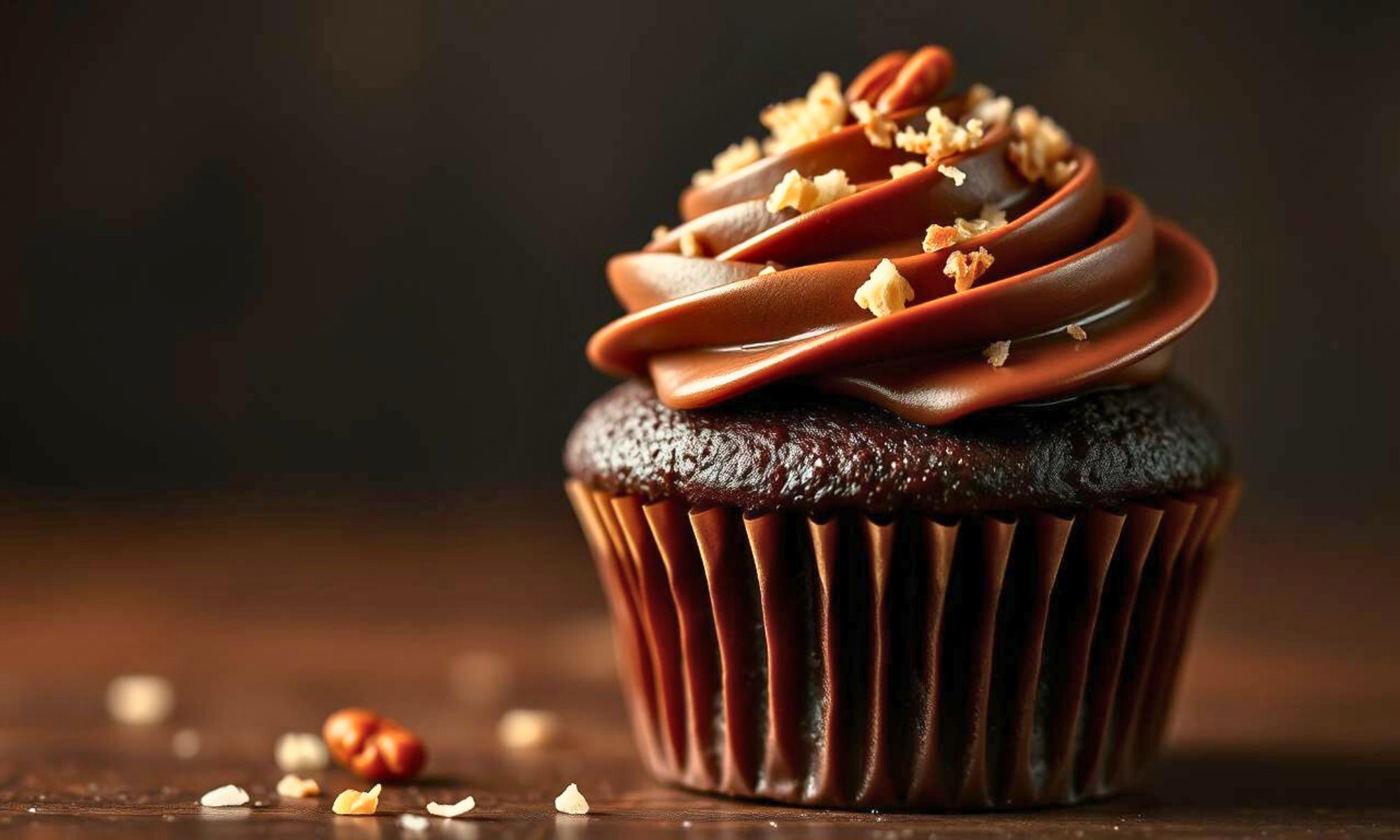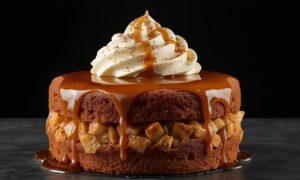Here’s something that’ll blow your mind; German chocolate isn’t German at all. It’s named after Samuel German, an American chocolatier who developed sweet baking chocolate for Baker’s Chocolate Company back in 1852. When I first learned this, I stood in my kitchen holding a bar of the stuff, feeling like everything I knew about baking was a beautiful lie.
But you know what? The story gets even better. Those iconic coconut pecan frosted cakes we all associate with “German chocolate” didn’t even exist until 1957, when a Texas homemaker’s recipe hit a Dallas newspaper. One recipe changed everything, and suddenly this distinctly American dessert fooled the world into thinking it had European roots.
That’s the magic I’m gonna share with you today, how to transform this classic cake into individual German Chocolate Cupcakes that’ll have people convinced you’ve been hiding a secret baking degree. These aren’t just cupcakes with coconut on top. They’re little clouds of chocolate perfection crowned with that signature coconut pecan frosting that makes grown adults weak in the knees.
Why These German Chocolate Cupcakes Will Change Your Life
Let me tell you why these cupcakes deserve serious real estate in your recipe collection. First off, they’re portion controlled perfection. No more awkward cake cutting at parties or wondering if you’re being too generous with slice sizes. Each cupcake celebrates itself.
The texture gets me every time. That German chocolate creates this incredibly tender, almost velvety crumb that’s rich without overwhelming you. It’s like the difference between a hug and a squeeze, both are nice, but one just feels perfectly right.
And here’s where it gets really good, these cupcakes actually improve with age. Not that they’ll last long enough to test this theory, but after a day or two, the flavors marry beautifully and make each bite even more complex.
The Secret Weapon: Understanding Your Chocolate
Before we dive into the nitty gritty, let’s talk about the star of the show. German chocolate tastes sweeter than regular dark chocolate, with this almost caramel like undertone that plays beautifully with coconut. If you can’t find it (and sometimes it’s tricky), substitute with semi sweet chocolate plus a tablespoon of sugar per ounce. It’s not exactly the same, but it’ll get you close enough to happy.
The key is treating your chocolate like the temperamental friend it is. Melt it gently, never rush it, and for the love of all that’s holy, don’t let any water near it. Even a tiny drop can turn your silky chocolate into a seized, grainy mess that’ll make you question your life choices.
Essential Ingredients & Smart Kitchen Swaps
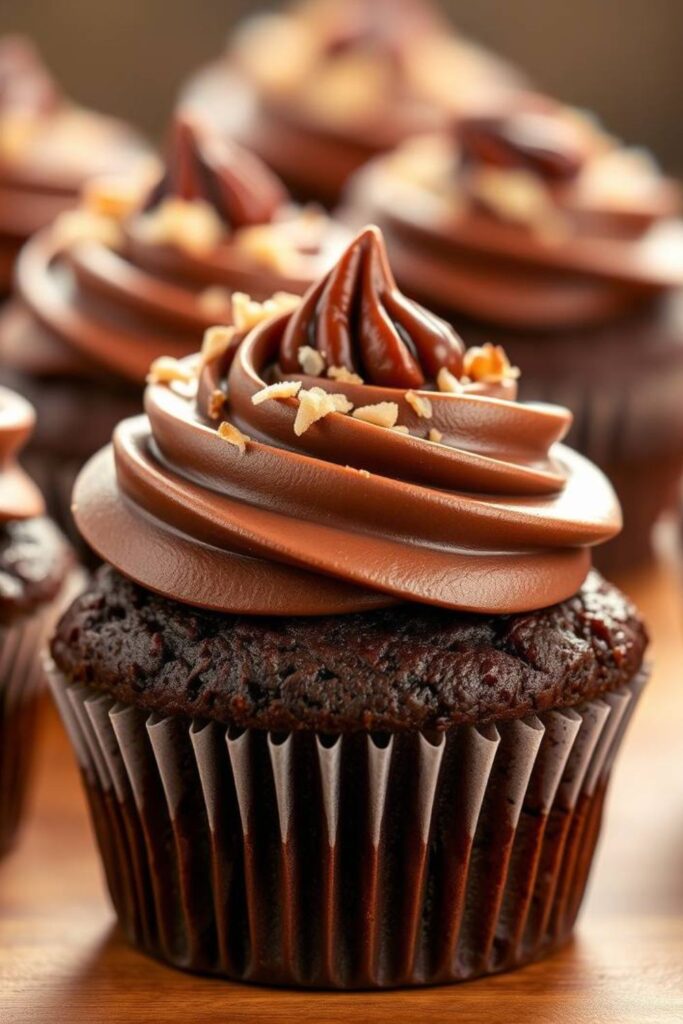
Here’s what you’re gonna need, listed in the order you’ll actually use them, because who has time for alphabetical ingredient lists when you’re in the zone?
For the Cupcakes:
- 4 oz German sweet chocolate, chopped
- 1/2 cup boiling water
- 1 cup (2 sticks) unsalted butter, room temperature
- 1 cup granulated sugar
- 4 large egg yolks (save those whites, we’ll need them)
- 1 teaspoon vanilla extract
- 1 cup all purpose flour
- 1/2 teaspoon baking soda
- 1/2 teaspoon salt
- 1/2 cup buttermilk
- 4 large egg whites (told you we’d need them)
For the Coconut Pecan Frosting:
- 1 cup evaporated milk
- 1 cup granulated sugar
- 3 large egg yolks
- 1/2 cup (1 stick) unsalted butter
- 1 teaspoon vanilla extract
- 1 1/3 cups sweetened shredded coconut
- 1 cup chopped pecans
When Life Gives You Substitution Challenges
Can’t find German chocolate? Semi sweet chocolate chips work, but add that extra tablespoon of sugar per ounce. It’s like giving your chocolate a little personality boost.
No buttermilk? Make your own by adding a tablespoon of white vinegar or lemon juice to regular milk. Let it sit for five minutes until it gets all tangy and thick. Chemistry happens right there in your kitchen.
Pecans too pricey? Walnuts work beautifully, or even toasted almonds if you’re feeling fancy. The texture’s what matters, you want that satisfying crunch that makes people go “mmm” on the first bite.
Here’s something most people don’t know: room temperature ingredients are your best friends. Cold butter won’t cream properly, cold eggs won’t incorporate smoothly, and cold milk can shock your melted chocolate. Give everything time to come to room temperature, or cheat like I do and place eggs in warm water for a few minutes.
Step by Step Magic: Creating Cupcake Perfection
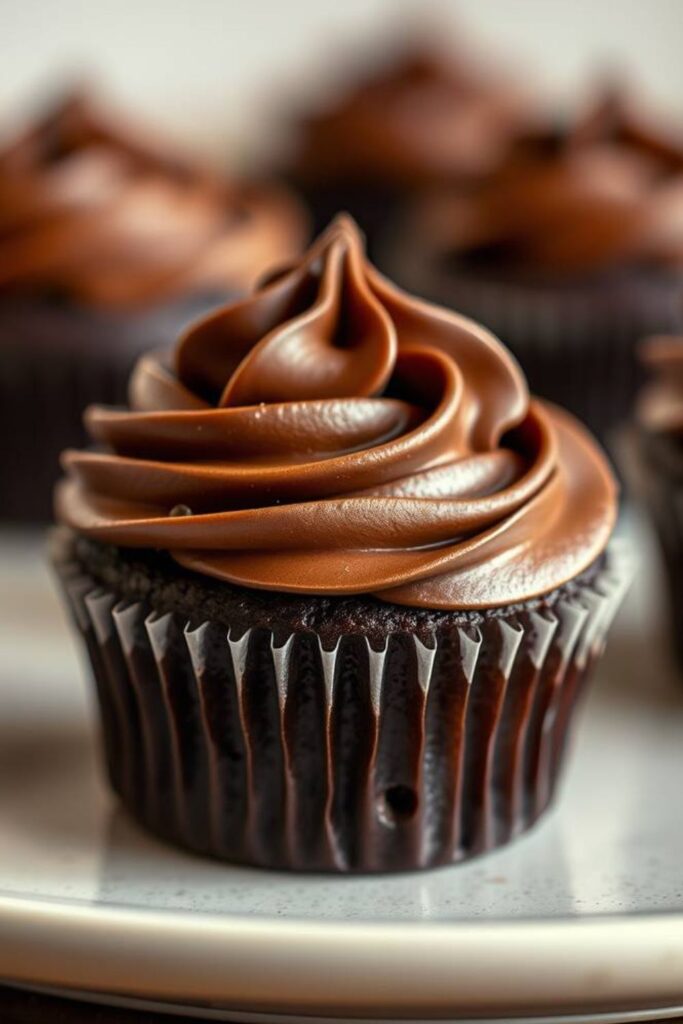
Let’s start with the chocolate because it needs time to cool down and behave itself. Chop your German chocolate into small, even pieces, think chocolate chip size. Pour that boiling water over it and stir until it melts completely and turns smooth. Set it aside to cool while you handle the other players.
Preheat your oven to 350°F and line your cupcake tins with papers. I prefer the unbleached parchment ones because they don’t leave that weird papery taste, but any will do.
Now for the butter magic. Cream that room temperature butter with the sugar until it’s light and fluffy, we’re talking three to four minutes of serious mixing. This isn’t the time to rush. You’re incorporating air, and that air makes your cupcakes tender instead of dense.
Beat in those egg yolks one at a time. Each one should fully incorporate before you add the next. Then comes the vanilla and your cooled chocolate mixture. The batter might look a little weird at this point, don’t panic, it’s supposed to.
In a separate bowl, whisk together your flour, baking soda, and salt. Here’s where technique matters: add the dry ingredients in three additions, alternating with the buttermilk in two additions. Start and end with the flour mixture. Mix just until combined, overmixing kills tender cupcakes.
The Game Changer: Whipped Egg Whites
This is where these cupcakes go from good to absolutely spectacular. Beat those egg whites until they form soft peaks, not stiff, just soft and billowy. Fold them gently into your batter using a rubber spatula. Cut down through the center, sweep along the bottom, and fold up and over. Rotate the bowl and repeat until just combined.
This technique adds incredible lightness to the cupcakes. It’s like the difference between a regular muffin and a cloud that happens to taste like chocolate heaven.
Divide the batter evenly among your cupcake liners, about 2/3 full. Bake for 18 22 minutes, until a toothpick inserted in the center comes out with just a few moist crumbs. Not clean, not wet, just a few crumbs clinging to it.
Cool them completely before frosting. I know it’s torture, but warm cupcakes will melt your frosting faster than you can say “coconut pecan disaster.”
The Science Behind the Sizzle
Let’s talk about why these techniques work, because understanding the why makes you a better baker. When you cream butter and sugar, you create tiny air pockets. Those air pockets expand in the oven, creating that tender crumb we’re after.
The chocolate and hot water mixture isn’t just about melting, it’s about blooming the chocolate’s flavor. Heat releases compounds that make chocolate taste more intensely chocolatey. It’s the same reason we bloom spices in hot oil.
Buttermilk adds acidity, which tenderizes the flour proteins and gives you that moist, fine crumb. It also reacts with the baking soda to provide lift. Without it, your cupcakes would be dense and flat.
Those whipped egg whites? They’re tiny balloons of air that expand in the oven’s heat. Folding them in (rather than mixing) preserves those air bubbles. Mix too aggressively and you’ll deflate them, losing that magical lightness.
The Frosting: Where Magic Meets Tradition
This coconut pecan frosting is actually a cooked custard base, not your typical buttercream. In a heavy bottomed saucepan, whisk together the evaporated milk, sugar, and egg yolks. Cook over medium heat, stirring constantly, until it thickens enough to coat the back of a spoon, about 10-12 minutes.
Remove from heat and stir in the butter and vanilla until smooth. Then fold in the coconut and pecans. The mixture will look loose at first, but it’ll thicken as it cools. If it gets too thick, stir in a tablespoon of milk. Too thin? Let it cool a bit more.
The key is patience. Rushing this frosting by turning up the heat will scramble your eggs faster than you can say “do over.” Low and slow wins the race every time.
Making It Beautiful & Delicious
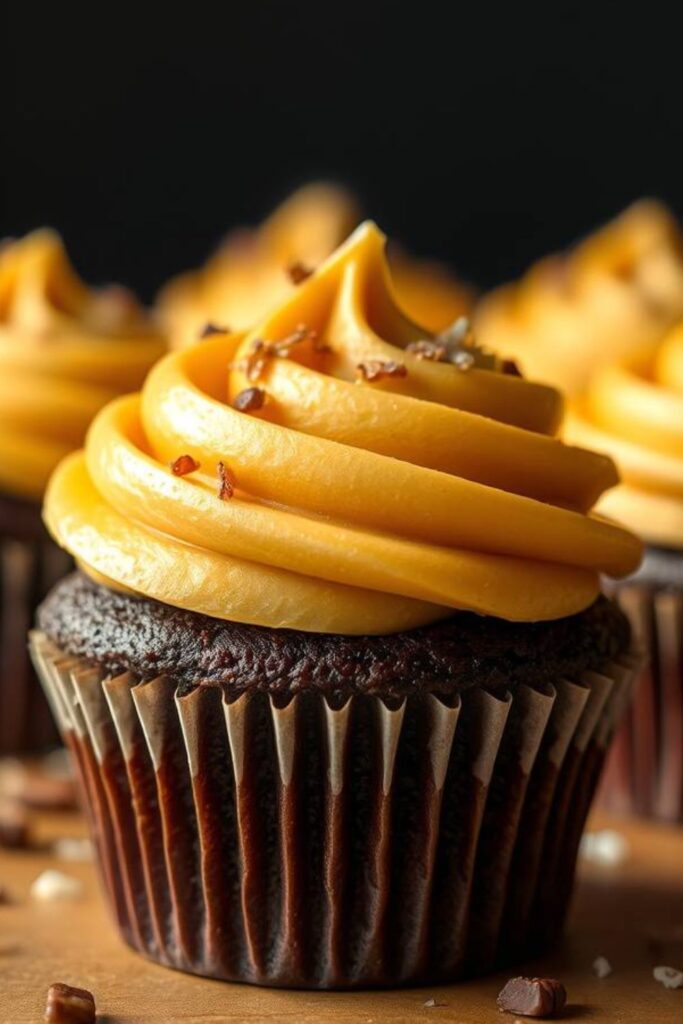
Presentation matters, even for cupcakes. I like to pipe the frosting on using a large star tip, creating these beautiful swirls that showcase all those coconut flakes and pecan pieces. But honestly? A simple dollop with an offset spatula works just fine too.
Here’s a pro tip: toast your pecans before adding them to the frosting. Five minutes in a 350°F oven transforms them from good to incredible. That toasted nuttiness plays beautifully with the sweet coconut.
These cupcakes pair beautifully with coffee, the bitterness balances all that sweet, rich frosting. If you’re serving them at a party, consider offering both regular and decaf. Your guests will thank you when they’re not buzzing at midnight.
For photos (because we all know you’re gonna Instagram these), natural light is your friend. The coconut catches light beautifully, and those golden pecans practically glow. Avoid overhead lighting, it flattens everything and makes your gorgeous cupcakes look ordinary.
Final Thoughts on German Chocolate Cupcakes
What makes these German Chocolate Cupcakes special isn’t just the flavors, though that combination of rich chocolate, sweet coconut, and crunchy pecans is pretty magical. It’s the technique, the attention to detail, and the love you put into each step.
These cupcakes tell a story. They’re a testament to how American ingenuity can create something so delicious it fools the world about its origins. Every bite carries a little piece of culinary history, dressed up in cupcake form.
The beauty of mastering this recipe is that it opens doors to so many variations. Want to make them boozy? Add a tablespoon of rum to the frosting. Feeling extra? Drizzle some chocolate ganache over the top. The basic technique stays the same, but the possibilities are endless.
Store these covered at room temperature for up to three days, or freeze the unfrosted cupcakes for up to three months. The frosting doesn’t freeze well because of the coconut, but the cupcakes themselves are perfect make ahead candidates.
Frequently Asked Questions about German Chocolate Cupcakes
Can I make these cupcakes ahead of time?
Absolutely! The cupcakes themselves actually improve after a day, the flavors meld beautifully. Bake them up to two days ahead, store them covered at room temperature, and frost them the day you plan to serve. You can also make the frosting a day ahead and store it in the fridge. Just bring it to room temperature and give it a quick stir before using.
My frosting turned out too thin, what went wrong?
Don’t panic! This usually happens when the mixture didn’t cook long enough or cooled too quickly. Pop it back on the stove over low heat and cook for another few minutes, stirring constantly. If it’s still thin after cooling, try chilling it in the fridge for 30 minutes. The butter will firm up and thicken everything nicely.
Can I use a different type of chocolate?
You can, but the flavor will change. Semi sweet chocolate works, but add that extra sugar I mentioned earlier. Dark chocolate makes them more intensely chocolatey but less sweet. Milk chocolate is too sweet and won’t give you that distinctive German chocolate flavor. If you’re gonna substitute, semi sweet with added sugar is your best bet.
Why did my cupcakes sink in the middle?
This usually happens from overmixing the batter after adding the flour, or from opening the oven door too early. Overmixing develops the gluten too much, making the cupcakes tough and causing them to rise too fast and then collapse. Opening the oven door lets heat escape and can cause the same rise and fall problem. Be gentle with your mixing and patient with your baking.
How do I know when the frosting is thick enough?
The classic test is the spoon test, dip a spoon in the mixture and run your finger across the back. If the line stays clear and doesn’t run together, you’re ready. It should coat the spoon but not be so thick that it’s difficult to spread. Remember, it’ll thicken more as it cools, so err on the side of slightly underdone rather than overdone.
Your Kitchen Confidence Boost
Remember, baking is part science, part art, and part magic. These German Chocolate Cupcakes might seem intimidating at first, but once you’ve made them a few times, you’ll wonder what all the fuss was about. Trust the process, trust your instincts, and most importantly, trust that even if they’re not perfect, they’re still gonna be delicious.
The real secret ingredient? Confidence. Bake like you know what you’re doing, even when you don’t. Your cupcakes will taste better for it, and you’ll have way more fun in the kitchen. Now go forth and create some coconut pecan magic!

Swiftly Captions by Tina Smith — Quick, flavorful food recipes made simple, bringing fresh inspiration to your kitchen every day
